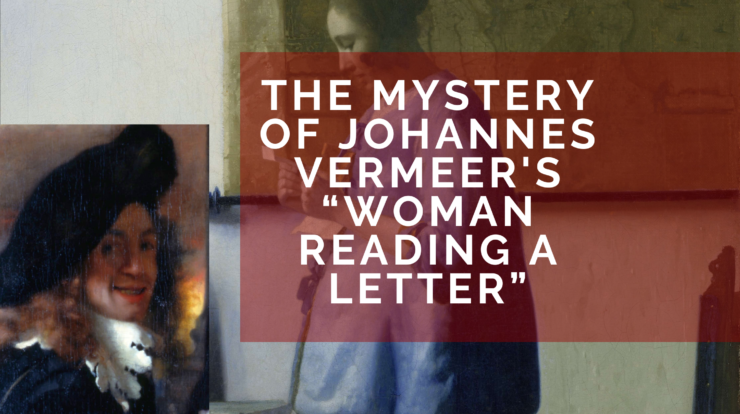
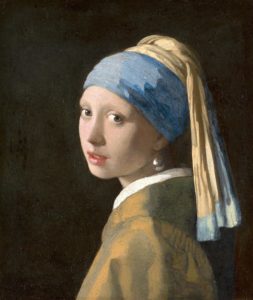
Johannes Vermeer is best known for his paintings of serene domestic scenes, like “The Milkmaid” and “Girl with a Pearl Earring.” The paintings are excellent examples of the delicacy and beauty of the Dutch realist style. Vermeer’s style is defined by his use of light and shadows to create a more perfect world than what he saw in reality. He used expensive pigment lapis lazuli to add depth and richness to his paintings. Vermeer’s subjects offer a glimpse into 17th-century Dutch society, from the everyday life of a milkmaid to the luxury of the rich. His use of light and shadows helped to create a more realistic and believable world for his viewers.
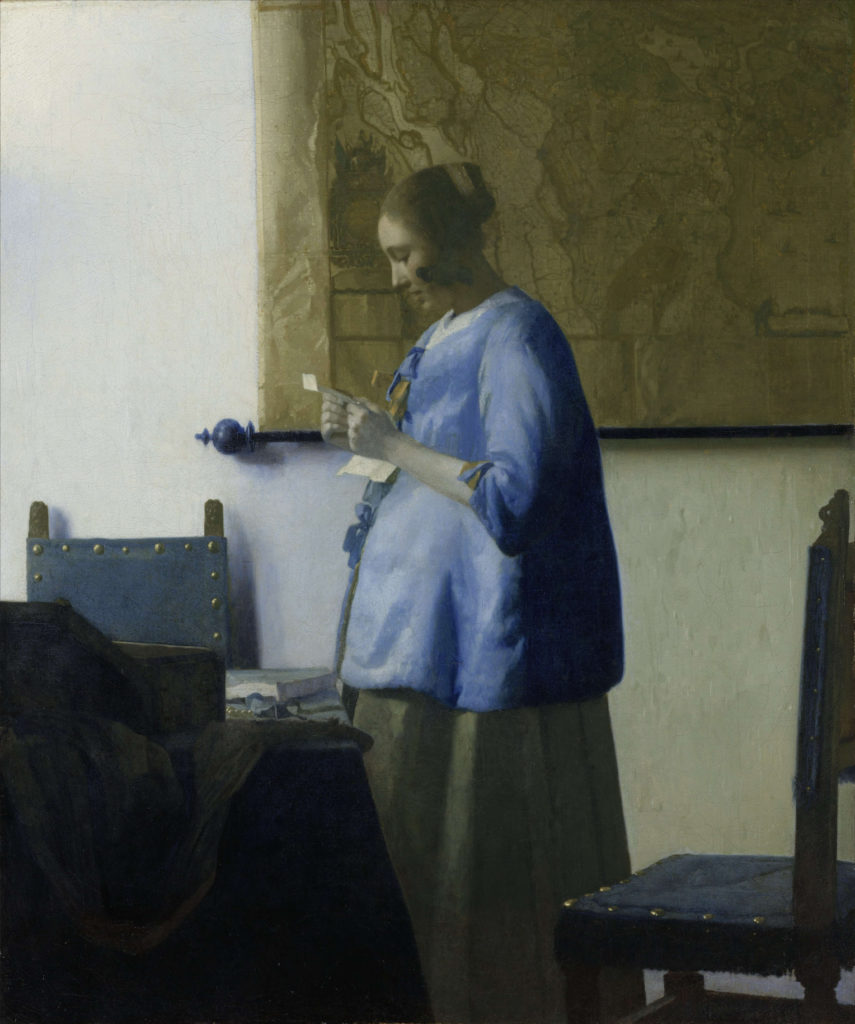
Woman Reading a Letter
His painting, “Woman Reading a Letter,” is another iconic example of his work and demonstrates how Vermeer could create a breathtaking composition and a compelling narrative.
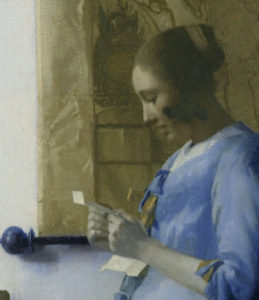 The painting shows a woman, dimmed by shadows, standing and reading a letter. The woman’s blue top is a beddejak, typically made of blue or white satin, and worn while in bed, giving the impression that perhaps she’s just woken up. An unseen window to the left casts soft light on her visage. We cannot see the letter’s contents, and there are few clues about its significance. The room is nearly bare.
The painting shows a woman, dimmed by shadows, standing and reading a letter. The woman’s blue top is a beddejak, typically made of blue or white satin, and worn while in bed, giving the impression that perhaps she’s just woken up. An unseen window to the left casts soft light on her visage. We cannot see the letter’s contents, and there are few clues about its significance. The room is nearly bare.
The painting is renowned for its mystery. What is the woman reading? What is the letter about? Why is she wearing a beddejak? Is she pregnant? These are all questions that have been debated by scholars for centuries.
Map of Holland
One interesting detail in the painting is the large, muted wall map of Holland in the upper right of the composition. Some have suggested that it may allude to the author of a letter, perhaps a husband away on a journey, or an absent lover (the pearls on the table could allude to vanity). But the map might have more practical implications. Decorative wall maps were a popular fixture of Dutch interiors during the 17th century. Most often, in paintings, they were included simply to add some compositional drama to otherwise empty walls. Vermeer’s inclusion of the map, and the way he has muted its colors so that it is nearly the same color as the woman’s head, suggests that the map reflects her quickly racing thoughts and emotions.
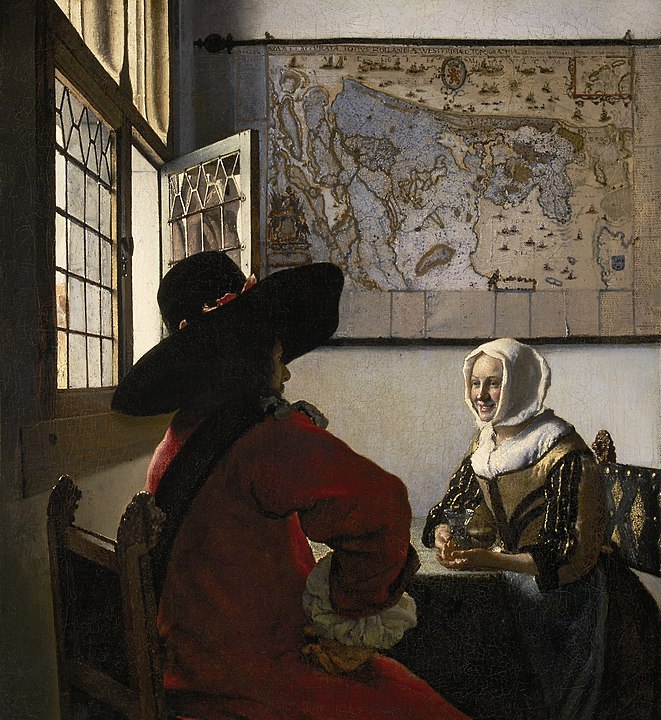
A Man of Details
Though Vermeer’s paintings may look like snapshots taken from daily life, his compositions were anything but unplanned. He often borrowed motifs from the works of his contemporaries, such as Gerard ter Borch. And he was known for his attention to detail, particularly regarding the effects of light and perspective. Some scholars believe that he worked with the aid of a camera obscura.
Vermeer’s Early Life
Vermeer was born in Delft in 1632, the son of a prosperous silk merchant, and apprenticed as a painter. He joined the Guild of Saint Luke in 1653 and married Catharina Bolenes that same year.
Vermeer’s Work
Vermeer worked slowly and with great care and frequently used very expensive pigments. He is particularly renowned for his masterly treatment and use of light in his work.
Most of Vermeer’s paintings depict domestic scenes set in two smallish rooms in his house in Delft. His subjects are mostly women engaged in everyday tasks such as reading, sewing, or cooking.
Vermeer’s Obscurity
Vermeer’s modest celebrity gave way to obscurity after his death in 1675. He was barely mentioned in Arnold Houbraken’s major source book on 17th-century Dutch painting (Grand Theatre of Dutch Painters and Women Artists) and was thus omitted from subsequent surveys of Dutch art for nearly two centuries. In the 19th century, Vermeer was rediscovered by Gustav Friedrich Waagen and Théophile Thoré-Bürger. They published an essay attributing 66 works to him, although only 34 paintings are universally attributed to him today.
Read more: https://news.artnet.com/art-world/vermeer-woman-reading-letter-three-things-to-know-1902900
https://en.wikipedia.org/wiki/Johannes_Vermeer
What do you See?
Are you a fan of Vermeer’s work? What do you see when you look at “Woman Reading a Letter? Have you created art that is open to interpretation?
The best paintings (in my opinion) are those which engage the viewer and leave more to the imagination. This is a great painting of just that. Vermeer was a talented artist who understood the dynamics of painting. All of his paintings with a narrative context to them are pretty cut and dry. For that reason alone, I am sure that it is an open-ended composition which is purely intended to provoke curiosity.
The phrase from a discussion, article, or some document a long time ago, was “Frozen Time.” It seems to be something the Dutch painters were able to accomplish but Vermeer’s paintings seem to be more articulate. We expect to see the letter page flutter in a breeze ever so slightly.
Vermeer and his fellow Dutchman, Rembrandt were very early favorites of mine in art school. I had a painting instructor who taught glazing to us and referenced Vermeer and Rembrandt. I still use glazing as one of my main techniques and always think about the Dutch painters.
As to the narrative. It is my assertion that once the marks have been put down and dry out, what the artist gives us as an image really invites a story. It is up to each of us to establish “a story”. Since we are all unique, there is no assumption that there is “a story”.
The Women in his paintings, from “Pearl” to his latest,… were all the same model. As was the Studio in which he painted. That created a throughline that is not even completely evident unless one is paying attention. The “Body of Work” being much the same.
Yes, Vermeer is one of my favorites among the Dutch painters. Based on his elevated treatment of ordinary people engaged in ordinary activity, I wonder if Vermeer sought to show how beautiful and worthy of respect ‘ordinary’ people can be.
Yes, also to your second question. This theme of seeing the commonplace as worthy is always in my own thoughts as I paint. There is such beauty even in something as humble as light glowing through a jar of homemade jam. People often tell me what they see in a piece and it can be very different from person to person. This is because I deliberately leave out enough of the story to give people room to use their own imagination. I believe this was Vermeer’s intent and I aspire to make it mine.
Another question just occurred to me as I read other comments. What is meant by “…open to interpretation?” Does interpretation mean the unique story each viewer brings to the table based on their own experiences, or does it mean us trying to get inside Vermeer’s head to determine what he intended to convey?
Must watch the u-tube BBC David Hockney’s Secret Knowledge. There is also a better one on this subject with Pen Teller but not available on U-tube.
Jason: Thank you for reminding us about Vermeer’s brilliance. He has been among my favorite artists for decades. there is a small collection of Vermeer’s at the National Gallery of Art in the west building in Gallery 39. in it are two of my favorite works of art both by Vermeer, Girl with a Flute and Girl with the Red Hat. Both are very small, less than ten inches in each dimension, but they are monumental in their use of shadow, color and composition. I think it is possible to mistake them for much more contemporary works, especially The Girl with a Flute. There is so much to love about his work, but as a former architect I am always drawn to the way he structures the compositions and pays homage to the walls, the doors, the windows and floors in his works. Buildings and the rooms within them are more than just settings in a Vermeer. They convey emotion, just as the people do. I always make a point of visiting these two masterpieces every time I am at the National, no matter what I am there to see. Anyone interested in Vermeer, or Camera Obscura should see the movie Tim’s Vermeer, if you haven’t already. It is incredibly entertaining.
Taking a look at these makes me realize that his paintings have just as much historical value as paintings of street scenes! Both are just as much about about earlier forms of daily life, the people IN the buildings.
An assignment in a painting class was to copy a master. I chose the Vermeer, the woman with the gold pitcher and bowl. After quitting the class (rap music—give us a break!), I painted the milkmaid. Now I have a pair of “original Vermeers” in my dining room. Love the light, the style of painting, the details, the simplicity of design.
Florent Farges has done a very good master study of this painting. One of the mysteries is what is the letter about. Some say it is a rejection letter. Possibly from one of Jason’s galleries.
We have all experienced how varied the viewers’ responses are to our work and usually how different from the stories we were trying to tell. Our “message” doesn’t matter.
Of course Vermeer, a truly great artist, meant to elicit the viewer’s experiences. We see, every day, examples of women “reading a letter” in the women looking at their cell phones. It doesn’t matter what they are seeing and prompts no mysteries. The only thing that matters is our interpretation of their reactions and our interpretations are based on our own experiences. Ergo, the letter reader’s story doesn’t matter…except to historians and sociologists.
p.s. My husband is a historian and he points out that the letter did not come from far away, it is too short. There was no easy mail back then; a traveler/soldier/sailor would write volumes over time, adding bits most days, and send said volumes home whenever they met someone going home…which was not frequent.
The numinous/luminous quality of everyday life…so beautiful but with an undercurrent of sadness
Vermeer is one of my favorite artists. I am inspired by his skill at showcasing beauty in the ordinary. This and his elusive narratives are things I want to emulate in my own work.
I do that by telling stories in paint about my own childhood in rural Michigan. The objects are chosen carefully, though my compositions most often spotlight a single object rather than a whole room setting.
I should like to study one day under someone who teaches Vermeer’s methods.
She does not have a ring on her left index finger.
Was she not married?
Is this a letter from the father of her child?
The future is not clear. (Just as our future is not clear? Do we have much in common with this woman?)